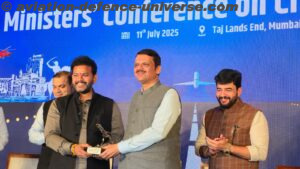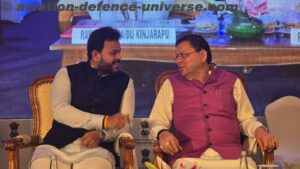By Brig.VK Atray & Sangeeta Saxena
- Obama gives a parting gift to dear friend Modi
New Delhi. 07 June 2016. Obama has given a special gift to Modi on the latter’s currently going on visit to USA. India is all set to become the 35th member of the Missile Technology Control Regime (MTCR)which is an informal and voluntary partnership among countries to prevent the proliferation of missile and unmanned aerial vehicle technology capable of carrying a 500 kg payload for at least 300 km.
It may be recalled that Italy had vetoed India’s application to join a key missile and UAV technology control committee last year. As a routine case India’s membership would have come up again during the MTCR’s next plenary session scheduled in South Korea later this year, but US wanted to get this membership cleared as soon as possible and give this gift to Modi on his visit to US. This membership will also mean a step nearer for India to join the Nuclear Suppliers Group. The Dutch chair of the MTCR has written to all member states asking them to approve Indian membership ‘by circulation’. Now that the second Italian marine has returned Italy’s veto is now a thing of the past. Also India adhered voluntarily to the Hague Code of Conduct Against Ballistic Missile Proliferation, which ‘complements’ the binding MTCR regime.
The Missile Technology Control Regime (MTCR) was established in April 1987 by the G7 countries: Canada, France, Germany, Italy, Japan, Great Britain, and the United States. The MTCR was created in order to curb the spread of unmanned delivery systems for nuclear weapons, specifically delivery systems that could carry a minimum payload of 500 kg a minimum of 300 km. At the annual meeting in Oslo on 29 June – 2 July 1992, chaired by Sten Lundbo, it was agreed to expand the scope of the MTCR to non proliferation of unmanned aerial vehicles (UAVs) for all weapons of mass destruction. Prohibited materials are divided into two Categories, which are outlined in the MTCR Equipment, Software, and Technology Annex. Membership has grown to 35 nations, with 3 additional nations, including Israel, adhering to the MTCR Guidelines unilaterally.
Since its establishment, the MTCR has been successful in helping to slow or stop several ballistic missile programs, according to the Arms Control Association: “Argentina, Egypt, and Iraq abandoned their joint Condor II ballistic missile program. Brazil, South Africa, and Taiwan also shelved or eliminated missile or space launch vehicle programs. Some Eastern European countries, such as Poland and the Czech Republic, destroyed their ballistic missiles, in part, to better their chances of joining MTCR.” In October 1994, in order to make the enforcement of MTCR Guidelines more uniform, the member states established a “no undercut” policy, meaning if one member denies the sale of some technology to another country, then all members must adhere.
The People’s Republic of China is not a member of the MTCR but has agreed to abide by the original 1987 Guidelines and Annex, but not the subsequent revisions. China first verbally pledged that it would adhere to the MTCR in November 1991, and included these assurances in a letter from its Foreign Minister in February 1992. China reiterated its pledge in the October 1994 US-China joint statement. In their October 1997 joint statement, the United States and China stated that they agree “to build on the 1994 Joint Statement on Missile Nonproliferation.” In 2004 China applied to join the MTCR, but members did not offer China membership because of concerns about China’s export control standards. Israel, Romania, and the Slovak Republic have also agreed to voluntarily follow MTCR export rules even though not yet members.
The MTCR has 34 members. Argentina, 1993 , Australia, 1990, Austria, 1991, Belgium, 1990, Bulgaria, 2004, Brazil, 1995, Canada, 1987, Czech Republic, 1998, Denmark, 1990, Finland, 1991, France, 1987, Germany, 1987, Greece, 1992 Hungary, 1993, Iceland, 1993, Ireland, 1992, Italy, 1987, Japan, 1987, Luxembourg, 1990, Netherlands, 1990, New Zealand, 1991, Norway, 1990, Poland, 1997, Portugal, 1992, Republic of Korea, 2001,Russian Federation, 1995,South Africa, 1995,Spain, 1990,Sweden, 1991,Switzerland, 1992,Turkey, 1997,Ukraine, 1998, United Kingdom, 1987, United States of America, 1987 and India will be the 35th member in 2016.
MTCR will ensure that for the most sensitive items under ‘Category I’ – complete missile systems capable of carrying a payload of at least 500 kgs over a distance of more than 300 km, and drones or components designed exclusively for use in such systems – the member states will have to deny export licenses altogether, subject to national law. The US, for example, permits certain exports but with tight restrictions on end-use. Category 2 items are largely dual use and include components that are needed for civilian space flight. Here, most MTCR states have a less restrictive policy.
Though the MTCR does not bar the sale of Category 1 or 2 items to non-members, India’s calculation is that membership of the club would make it easier to acquire critical components and even systems, especially for its space programme. The Indian military is also interested in purchasing US drones – a Category 1 item.
This membership is the first of the four export regimes that India aims to join in order to remove restrictions on high-technology trade. The United States been actively supporting India’s membership for the four regimes as part of the India-US civil nuclear cooperation agreement.
























































































































